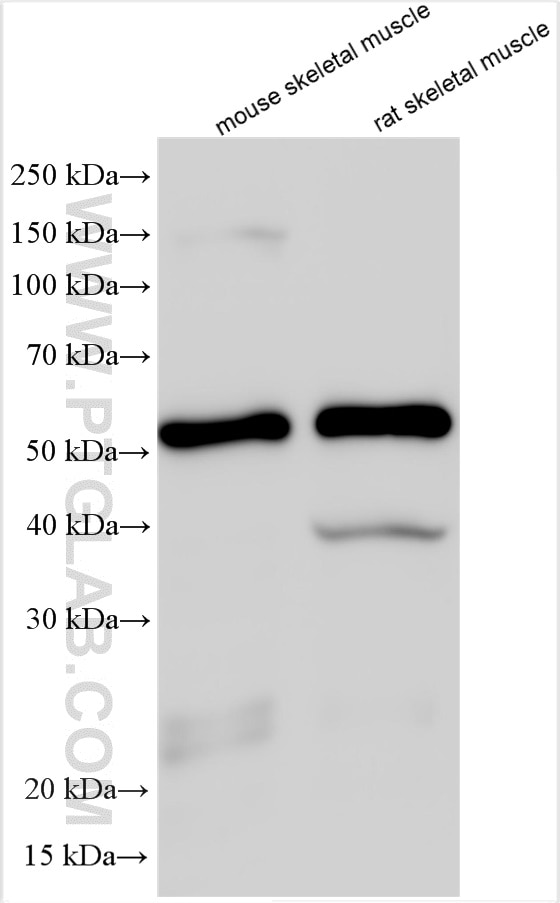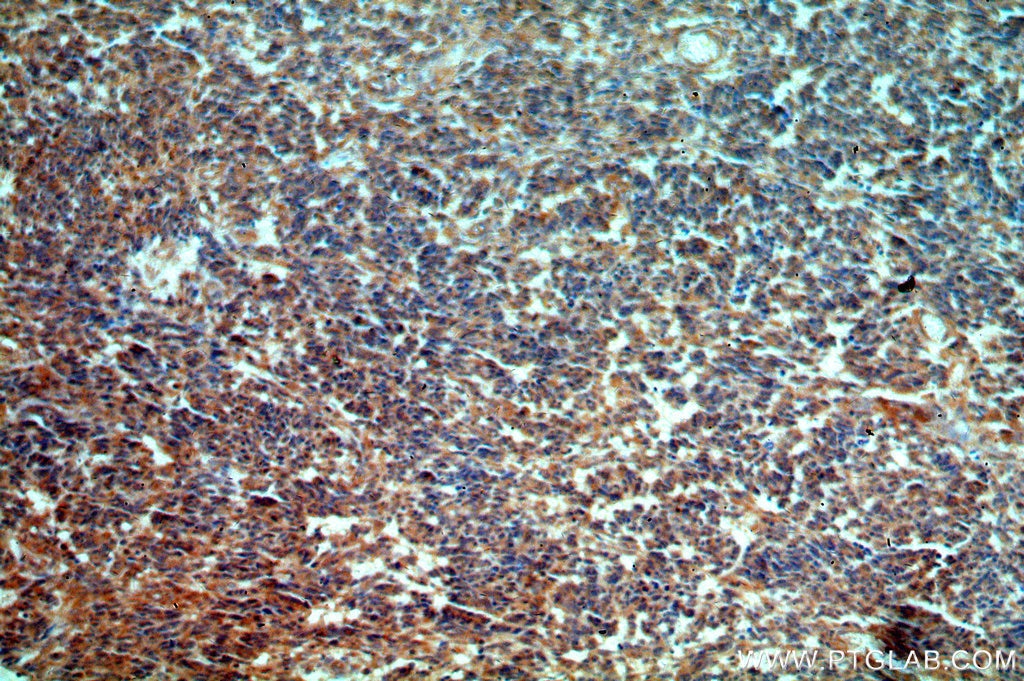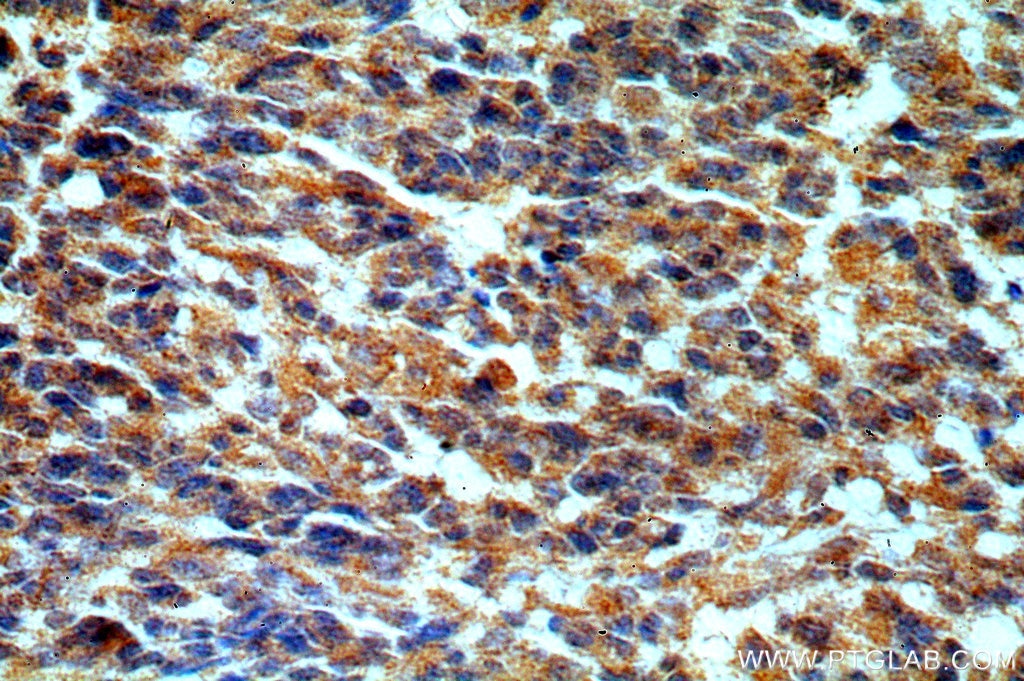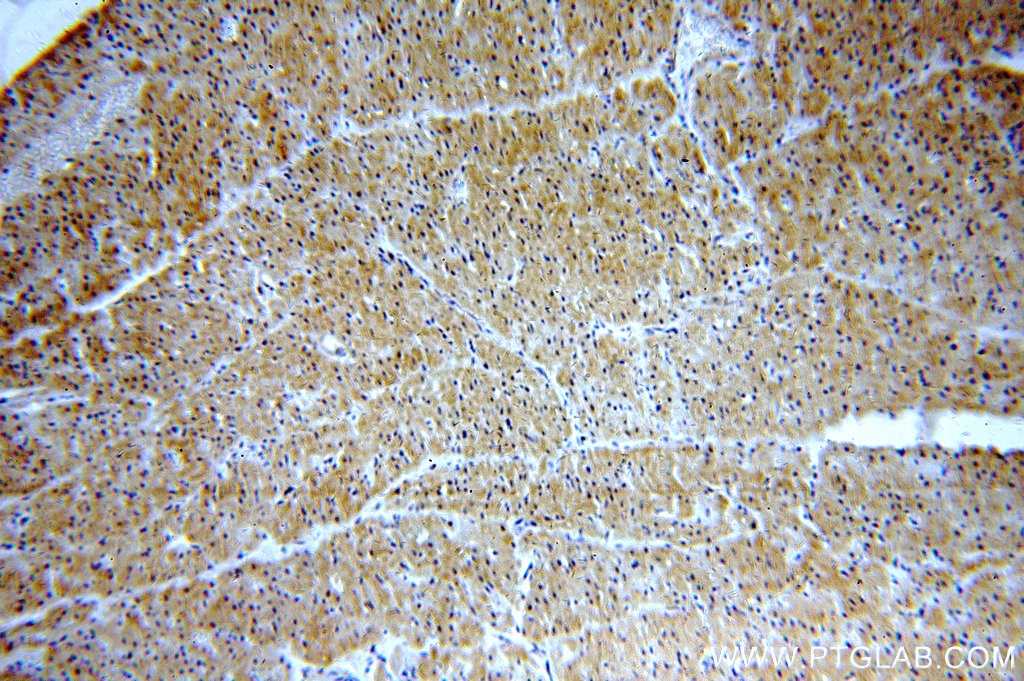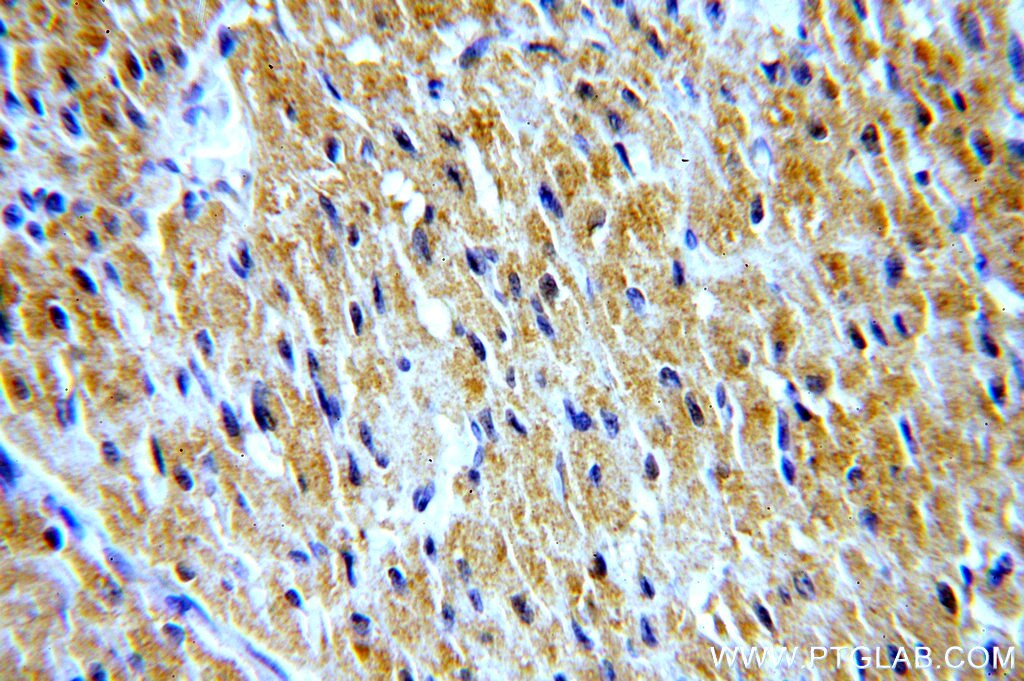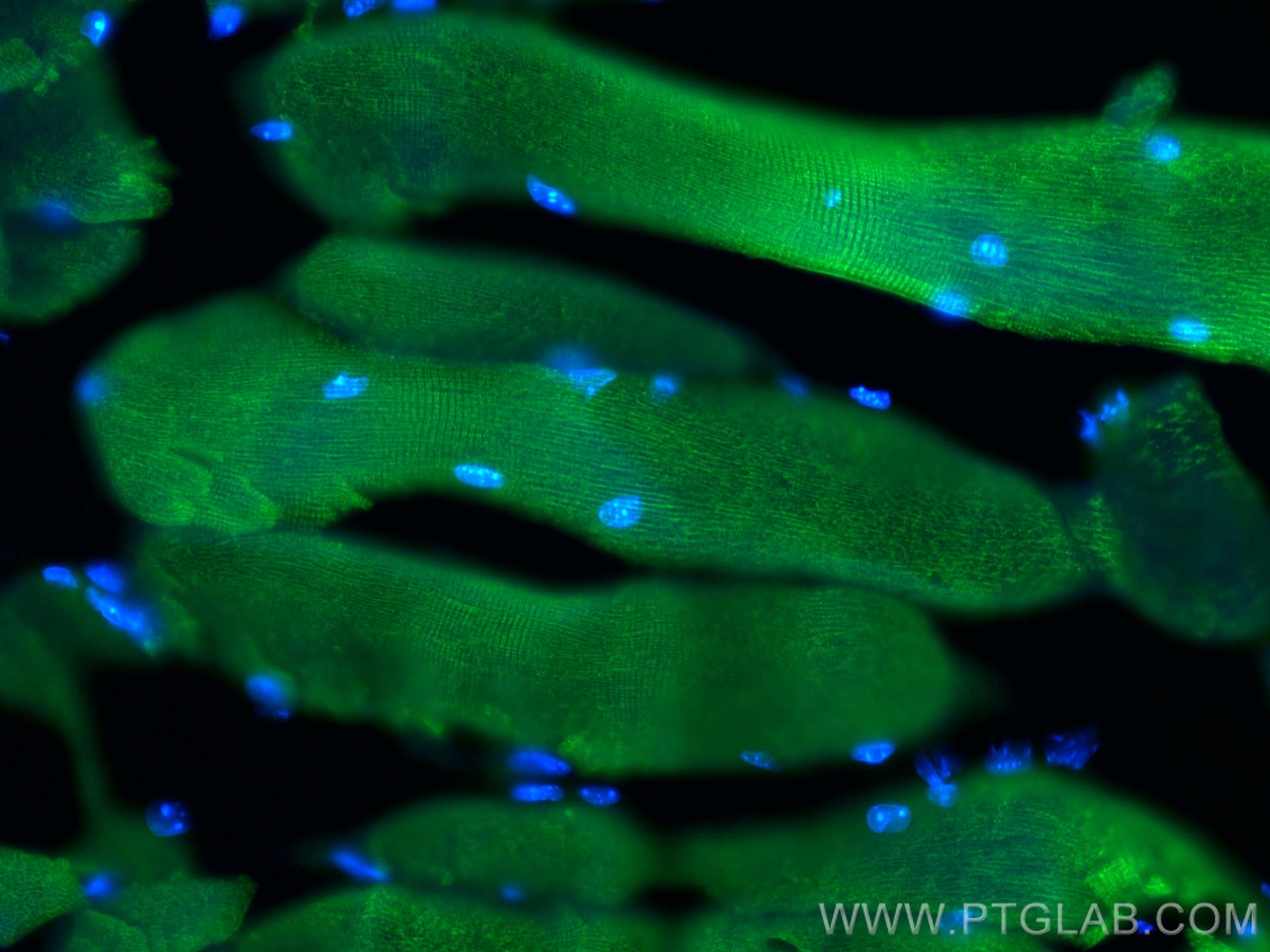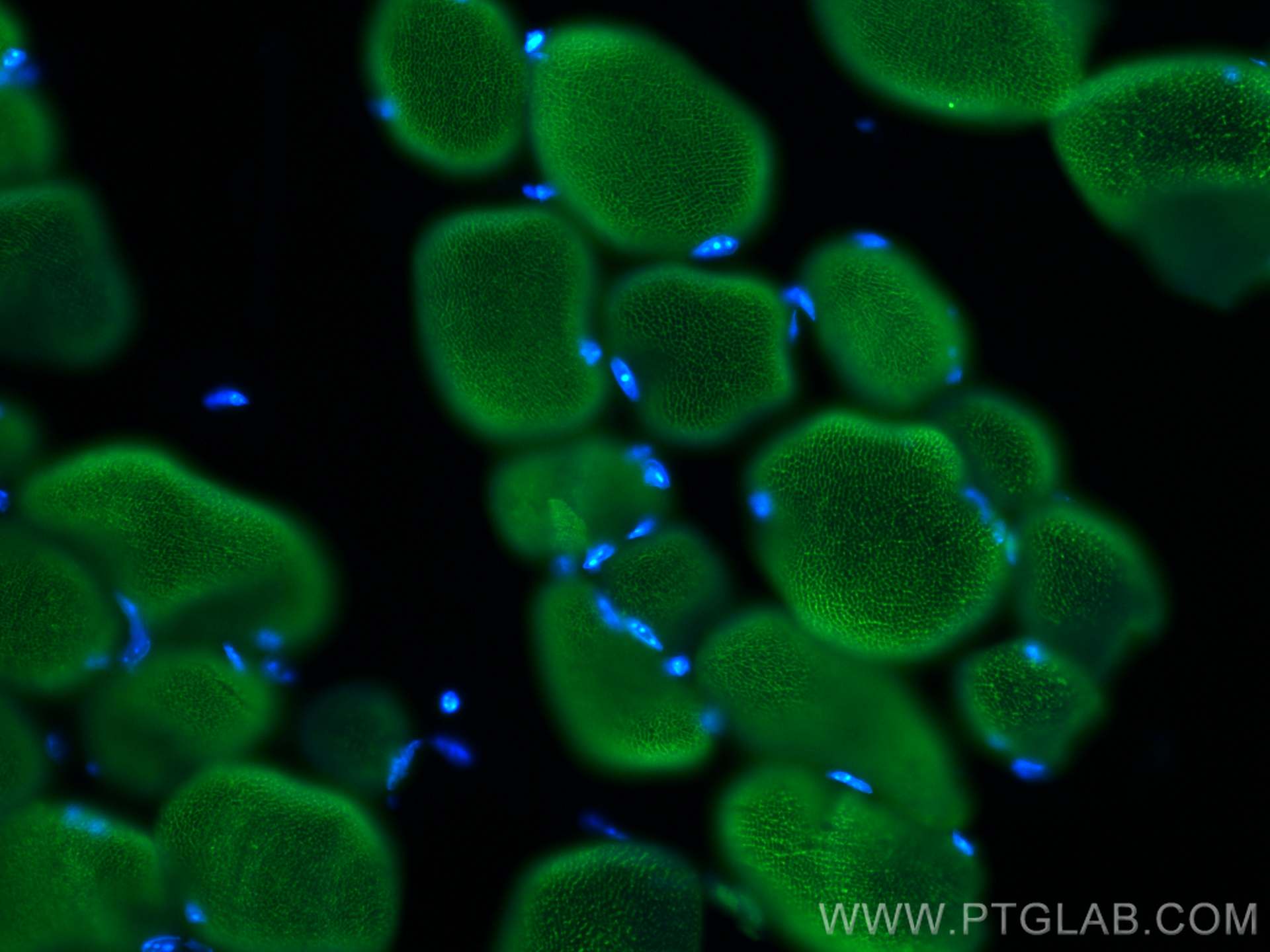- Phare
- Validé par KD/KO
Anticorps Polyclonal de lapin anti-STAC3
STAC3 Polyclonal Antibody for WB, IHC, IF-P, ELISA
Hôte / Isotype
Lapin / IgG
Réactivité testée
Humain, rat, souris
Applications
WB, IHC, IF-P, CoIP, ELISA
Conjugaison
Non conjugué
N° de cat : 20392-1-AP
Synonymes
Galerie de données de validation
Applications testées
| Résultats positifs en WB | tissu de muscle squelettique de souris, tissu de muscle squelettique de rat |
| Résultats positifs en IHC | tissu de gliome humain, tissu cardiaque humain il est suggéré de démasquer l'antigène avec un tampon de TE buffer pH 9.0; (*) À défaut, 'le démasquage de l'antigène peut être 'effectué avec un tampon citrate pH 6,0. |
| Résultats positifs en IF-P | tissu de muscle squelettique de souris, |
Dilution recommandée
| Application | Dilution |
|---|---|
| Western Blot (WB) | WB : 1:2000-1:14000 |
| Immunohistochimie (IHC) | IHC : 1:20-1:200 |
| Immunofluorescence (IF)-P | IF-P : 1:50-1:500 |
| It is recommended that this reagent should be titrated in each testing system to obtain optimal results. | |
| Sample-dependent, check data in validation data gallery | |
Applications publiées
| KD/KO | See 2 publications below |
| WB | See 8 publications below |
| IHC | See 1 publications below |
| IF | See 2 publications below |
| CoIP | See 1 publications below |
Informations sur le produit
20392-1-AP cible STAC3 dans les applications de WB, IHC, IF-P, CoIP, ELISA et montre une réactivité avec des échantillons Humain, rat, souris
| Réactivité | Humain, rat, souris |
| Réactivité citée | rat, Humain, souris |
| Hôte / Isotype | Lapin / IgG |
| Clonalité | Polyclonal |
| Type | Anticorps |
| Immunogène | STAC3 Protéine recombinante Ag14232 |
| Nom complet | SH3 and cysteine rich domain 3 |
| Masse moléculaire calculée | 364 aa, 42 kDa |
| Poids moléculaire observé | 42-55 kDa |
| Numéro d’acquisition GenBank | BC008069 |
| Symbole du gène | STAC3 |
| Identification du gène (NCBI) | 246329 |
| Conjugaison | Non conjugué |
| Forme | Liquide |
| Méthode de purification | Purification par affinité contre l'antigène |
| Tampon de stockage | PBS with 0.02% sodium azide and 50% glycerol |
| Conditions de stockage | Stocker à -20°C. Stable pendant un an après l'expédition. L'aliquotage n'est pas nécessaire pour le stockage à -20oC Les 20ul contiennent 0,1% de BSA. |
Protocole
| Product Specific Protocols | |
|---|---|
| WB protocol for STAC3 antibody 20392-1-AP | Download protocol |
| IHC protocol for STAC3 antibody 20392-1-AP | Download protocol |
| IF protocol for STAC3 antibody 20392-1-AP | Download protocol |
| Standard Protocols | |
|---|---|
| Click here to view our Standard Protocols |
Publications
| Species | Application | Title |
|---|---|---|
Hum Mutat STAC3 variants cause a congenital myopathy with distinctive dysmorphic features and malignant hyperthermia susceptibility. | ||
Structure Multiple Sequence Variants in STAC3 Affect Interactions with CaV1.1 and Excitation-Contraction Coupling.
| ||
Skelet Muscle The SH3 and cysteine-rich domain 3 (Stac3) gene is important to growth, fiber composition, and calcium release from the sarcoplasmic reticulum in postnatal skeletal muscle.
| ||
J Cell Physiol STAC3 incorporation into skeletal muscle triads occurs independent of the dihydropyridine receptor. | ||
J Gen Physiol Calcium current modulation by the γ1 subunit depends on alternative splicing of CaV1.1. | ||
J Appl Physiol (1985) Preconditioning contractions prevent prolonged force depression and Ca2+-dependent proteolysis of STAC3 after damaging eccentric contractions. |
